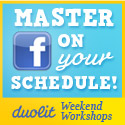The following is a guest post by Tracy Atkins.
 The odds of winning $10,000 in the Powerball Lottery: 1 in 648,975.
The odds of winning $10,000 in the Powerball Lottery: 1 in 648,975.
The odds of successfully producing a top-100 selling book: 1 in 3,282.
The perceived odds of success are a big draw for many self publishers.
It seems like a no brainer and a gamble worth taking to create and release a novel to achieve fame and fortune. Like playing the lottery, some authors simply attempt to get rich quick, by rapidly writing and pushing out a book and then hope for the money to roll in.
In some ways, it is no different from stopping by a convenience store and buying a $2 lotto ticket. It is not, however, a strategy for real-world success and profit.
Taking a long-odds gamble rarely pays off, especially in publishing. Although it is easy to write a novel and release it upon the world for little to no outlay in cash or effort, the outcome you should expect isn’t the same as if you bought that Powerball ticket.
Yes, luck does play a part in both gambling and self-publishing, but luck must be tempered with reason.
Unlike the lottery, producing a book with an expectation for a return on your investment is work and requires more than a passing effort to succeed.
Self-publishing is a business venture.
In my experience, the delusion of instant wealth is something that every serious self-publisher must overcome.
Once you move past that notion, you can begin to approach writing with a business-oriented mindset. Business acumen and creativity must be in balance for the successful self-published author.
Simply put, you must be creative and passionate about what you write to build compelling content. To create a book product from that content, however, you must have the ability to make rational business decisions for the benefit of your work and bottom line.
This dual mindset intermingles throughout the process of self-publishing in different ways.
There are times where our creative spirit takes center stage, and we let our muse do the talking. Other times, our savvy business sense must silence our muse, and we must become objective business people. Several steps of the self-publishing process require cooperation of both disciplines.
The Roles of the Self-Publisher
With that in mind, a self-publisher typically has to wear several hats throughout the process to release a commercially viable work. Management of these phases, from the book’s genesis through its execution, requires us to become different people. Each with the proper balance required to fulfill those very different roles required to complete each phase of the book.
The Financier with a Dream
This is the first role we should play when planning to write a book, be it fiction, non-fiction, a short-story or a trilogy.
Our creative side is calling on us to produce content. We get our ideas together and start to dream. Often, we forget that there is going to be a financial burden attached with seeing this dream in final form, in print.
Starting to think of the business ramifications of creating a commercial work is crucial at this phase. An author should take stock of their financial situation and put together a realistic budget that they can afford throughout the entire book development and marketing process.
This is the time to consider the cost of an editor, cover design, promotional materials, book layout, marketing, and other professional services that cost money. Setting a realistic and basic financial budget in place now is the best way to make sure you plan for and meet your goals on schedule.
The production process can last a year or even longer if you plan a wide release with professional production and an eye toward obtaining reviews and media attention.
The Creative Genius
Writers are made for this role.
After you get your budget and ideas collected, create the work. Write the book free from the stress of worrying about the budgetary constraints or options ahead. Starting with a clear mind will help your muse do what it does best.
Perhaps through the exercises of the first step, you have a better understanding of what kind of product you will eventually make and can better tailor your writing to fulfill your end goal. This is a time to focus on one task and to write the best book you possibly can.
The Objective Editor
This is where you have to pull back and mix the creative side with the business side.
In both fiction and non-fiction, editorial and rewrite work is critical. For rewrites, you will have to use your creative side to make sure that any added or removed content is consistent and brilliant. From the business side, your mindset should focus on making rational choices in editing that will provide the strongest product possible that you can to sell to your customers, or readers.
Taking a rational and objective approach to working with professional editors is essential to successful navigation of the process. It prevents the emotional stress of building a marketable work, removing ego from the equation.
Take a step back and become less attached to your work for this phase, and look at it in the same light that your readers will, or your market, when possible.
The Shrewd Designer
Covers, promotional materials, and marketing communications are the vanguard of your novel that the public will encounter first.
Here, the creative side takes a back seat to the realization that market forces dictate a certain style and feel for everything on the periphery of the book’s contents itself. This is the time to make a realistic assessment of your own skills in graphic design, and talent for creating summaries of the work, press-releases, and advertising.
If you are not confident that your skills will produce commercial level work that is commensurate and comparable to current top-shelf titles, then you should hire out those services.
These activities are business decisions and should be approached as such. A picture may be worth a thousand words, but a fantastic cover compels a thousand purchases.
The Patient and Persistent Marketer
This phase is one of the longest and least understood pieces of the self-publishing equation.
Although there is a certain degree of creativity required to market a book product, every decision here will have a price tag attached or financial consequences.
Deciding where to send a print copy or an eBook for review is a daunting task. If you intend to have major media outlets such as magazines review your book, they may need 90-120 days of lead time to do the review. Most websites that provide free or paid editorial reviews require 30-60 days of lead time to read the work and evaluate it.
Press releases can cost hundreds of dollars to disseminate if you are using a national system that pushes out publications. These materials must be created correctly and in proper form.
If you plan to use social media, it is never advisable to just pop-up one day and start trying to sell your work online. This is considered “spam” and you risk being black-listed from critical sites. You need to have months of lead up to build contacts in social networking.
You will be told “no” many times in this entire process, it is just a fact. No matter the outcome, every single decision can have massive consequences on your bottom line. It is part luck, but also heavily dependent upon your effort. These activities extend past your book’s launch date, often for many months. Timing the launch is critical, and you must create a workable schedule.
The Entrepreneur Creator
Once your book is out, the best way to ensure it sells is to write another one.
Many self-published authors do not see real success and profit until after their third book. By this time, the culminations of public exposures usually reach critical mass and the author starts to see sales numbers that are satisfactory.
Writing for profit is a long term goal. You must amortize the cost of your creations with an overall plan to achieve profitability with your work over the course of several books and years of publishing. These are business decisions that anyone can do and success is achievable.
Do not waste money and always perform some rudimentary analysis on how effective each of your efforts are. Take the long view!
Self-publishing is a creative business.
There is no rational shortcut around the work, if you want the satisfaction of earning a place in the market.
Trying to get rich quick with self-publishing is a fallacy that is on par with playing the lottery. You must become a long term entrepreneur and creator to thrive.
Being a solo entrepreneur means that you will play many different parts in the business cycle. You may have to invest several thousand dollars into your book to make it viable on the market.
If you are only interested in a quick turnaround, the odds are not in your favor. If you invest that same $4,000 in lottery tickets, the odds for winning that $10,000 Powerball sum go up to around 1 in 324. Therefore, if you are looking to get rich fast, maybe you should play the lottery instead of writing that novel.
If you want to make a career of writing and are not seeking simple vanity or fame, then remember to balance all of your creative effort with a dash of business sense.
Tracy R. Atkins has been a career technology aficionado since he was young. At the age of eighteen, he played a critical role in an internet startup, cutting his tech-teeth during the dot-com boom. He is a passionate writer whose stories intertwine technology with exploration of the human condition. Tracy is also the self-published author of the speculative fiction novel Aeternum Ray.
 We're
We're 








